Installing paneling is a great way to freshen up your home décor. But, what if you don’t have access to a saw? Don’t worry! You can still cut paneling without a saw – all you need are some basic tools and our expert guidance. In this article, we’ll explain how to cut paneling without a saw and provide some useful tips to help you get the job done properly.
What are Paneling?
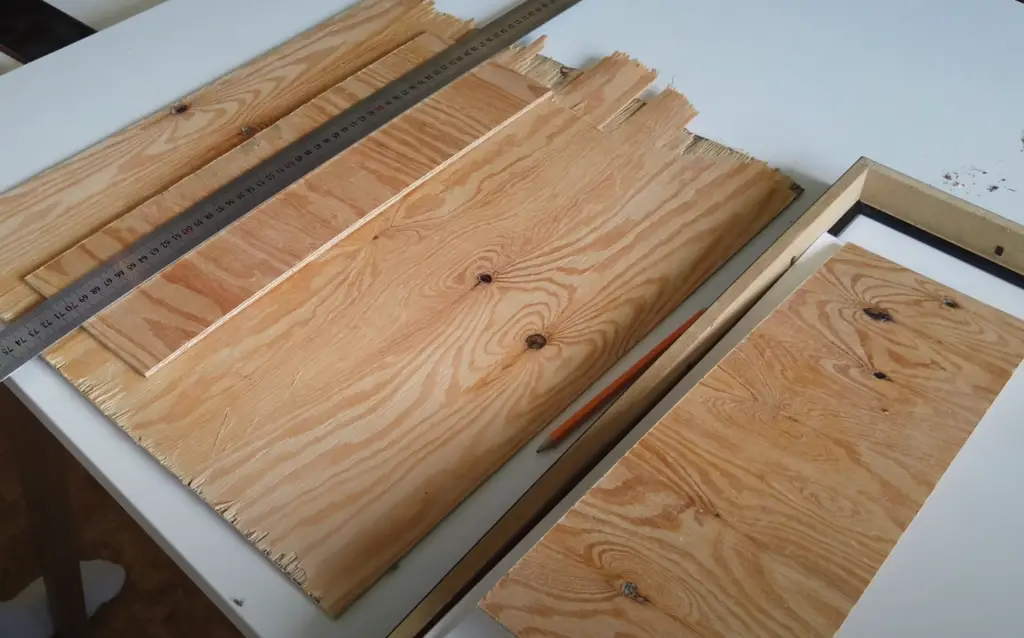
Is it hard to cut Paneling?
Depending on the type of paneling you are cutting, it can range from easy to difficult. If the paneling is made out of a softer material like vinyl or foam, then it is much easier to cut without a saw as you can make clean cuts with a craft knife or scissors. However, if the paneling is made out of hardboard or some other dense material, then it can be difficult to cut without a saw as it requires more precise tools and techniques. [1]
Before You Begin
When it comes to cutting paneling without a saw, there are a few things you should be aware of before you begin. Here are some tips that will help make the job easier:
- Always wear safety goggles and gloves to protect your eyes and hands from splinters.
- Use an electric power drill or hand saw with fine-toothed blades for best results.
- Measure twice and cut once to avoid any mistakes!
- Make sure your paneling is securely held in place before you start cutting. [1]
Using a Utility Knife
Using a utility knife is one of the most popular ways to cut paneling without a saw. It’s relatively easy and can be done with some basic supplies.
To get started, you’ll need:
- A straight edge (ruler or level)
- Utility knife
- Protective gloves
- Masking tape or painter’s tape
To begin, lay the paneling on a flat surface. Measure the length and width of the area you need to cut. Mark the measurements with masking or painter’s tape. This will give you a guide for making an even cut.
Using your utility knife, carefully score along the edges of your marked lines. Make sure to hold your knife straight and steady. You can also use a ruler or level as a guide if needed.
Once you’ve scored all four sides, press down on the paneling from either side of the cut. This will cause it to break along the scores you made with the utility knife.
Finally, use some sandpaper to smooth out any rough edges that may have been created by the cut. [1]
Using Scissors
If you don’t have access to a saw, scissors can be used as an alternative. It’s not ideal, but it will get the job done in a pinch.
To use scissors to cut paneling, start by measuring the required length and marking the spot with a pencil or pen. Place your paneling along the edge of a sturdy work surface and make sure it’s secure. Then, press the scissors firmly against the paneling and see back and forth until you reach the mark.
Once you’ve reached the mark, finish cutting through by pushing down with as much pressure as possible. When complete, check for any remaining rough edges that may need sanding down before installation. [1]
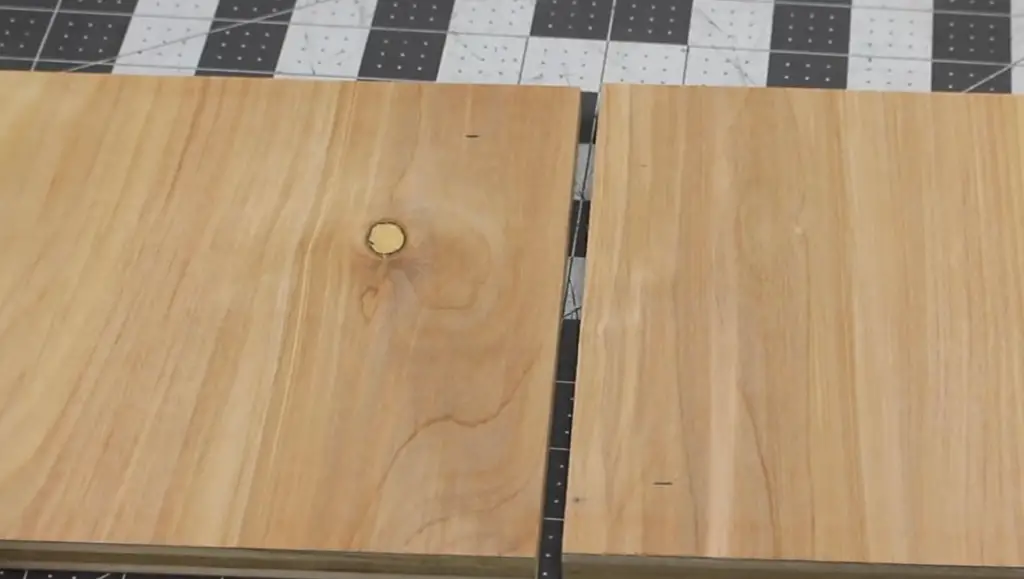
Using Cutters and Shears
Using cutters and shears (also known as snips) is the easiest way to cut paneling without a saw. Snips come in different shapes: straight, offset, compound action, etc. Depending on your project, you can choose the most suitable tool for cutting your paneling.
Cutters are designed with sharp blades that make clean cuts. It’s important to make sure that the blades are sharp and in good condition to get a smooth cut.
Make sure you wear thick gloves when using these tools, as they can be hard on your hands and painful if used incorrectly.
Using snips is simple: place them at one end of the paneling and use one hand to pull the snips forward and the other to guide them along. This is a great way to cut paneling in tight or narrow spaces where it would be difficult to use a saw. [1]
Potential Problems
When cutting paneling without a saw, there are certain potential problems that may arise. The most common one is the risk of chipping or cracking the material during the cutting process. This can occur if too much pressure is applied when making the cut. For this reason, it’s important to use a sharp blade and apply even pressure at all points along the cut.
Another potential problem is the risk of inaccurate cuts due to uneven pressure. If too much pressure is applied in one area, it can cause an uneven cut or a “ripple” effect along the edge of the paneling. It’s important to ensure that you’re applying equal pressure at all points along the cut line. [1]
Pull Bar
One of the best ways to cut paneling without a saw is to use a pull bar. A pull bar looks like a metal pole with an angled end and sharp edges that make it easy to insert between two panels. To use, simply position the angled end of the pull bar in between two panels and then pull outward until they separate. You may need to adjust the angle of the pull bar slightly as you go to ensure a clean cut. You’ll be left with two separate panels that have an even and smooth edge. Pull bars are easy to use, but it does take some practice to get the hang of it. [2]
Using Multi-Tool
A multi-tool is a versatile tool that can be used to cut all types of paneling. It works by using oscillating blades which vibrate in an up and down motion very quickly, allowing it to slice through the material with ease. The advantage of using a multi-tool for cutting paneling is that it’s fast, easy, and precise, since it can be used to make curved as well as straight cuts.
To use a multi-tool for cutting paneling, begin by attaching the correct blade or accessory to the tool. The most common type of blade used is an oscillating saw blade, but other attachments such as scrapers and sanders can also be helpful in removing material from hard-to-reach areas. If you are cutting curves, consider using an oscillating knife blade which will allow for even smoother cuts. [2]
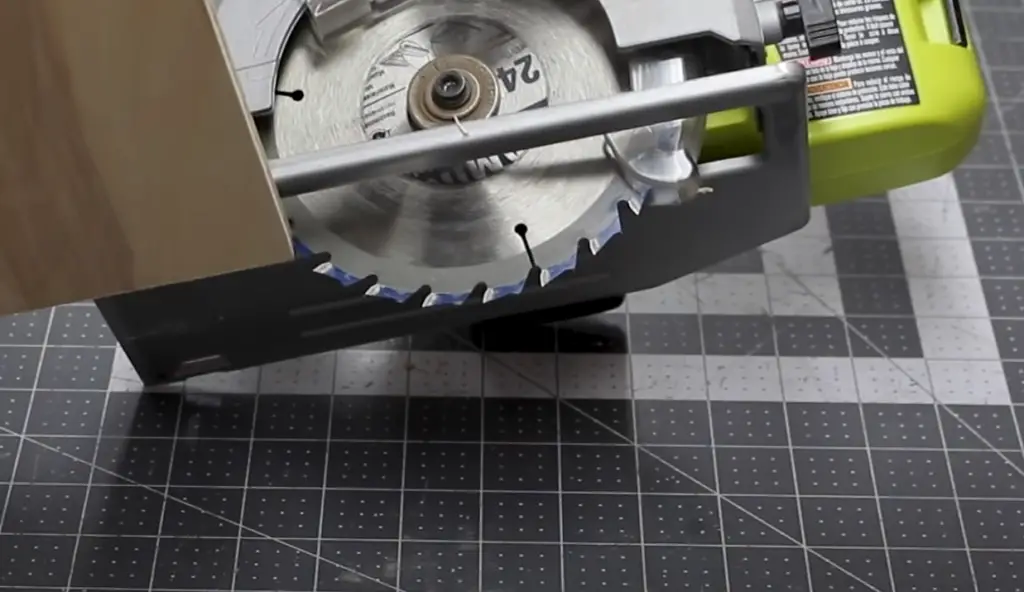
Rubber Mallet
Using a rubber mallet on the paneling is an effective way to separate it into smaller pieces without using a saw. Start by tapping along the edges of the paneling, and gradually hit harder as you go deeper. The force from the rubber mallet will cause the paneling to break apart along its grain lines, allowing you to easily separate it into smaller pieces. [2]
Drill or Spade Bit
One of the most common methods for cutting paneling without a saw is to use a drill or spade bit. This is especially useful when you don’t have access to an electric saw, and it’s simple to do.
First, measure the length that needs to be cut and mark it with a pencil on the surface of the paneling. The best way to do this is to use a measuring tape. Make sure you leave ample space at the top and bottom of your cut line.
Once you’ve marked the area that needs to be cut, take a drill or spade bit (depending on how thick your paneling is) and attach it to your drill. Position the drill so that its bit is lined up with your marked cut line. [2]
The Dremel Trio
The Dremel Trio is an ideal tool for cutting paneling without the use of a saw. This powerful multi-purpose tool can be used to cut not only paneling, but also other materials such as laminate, drywall and plastic laminates. It is available in both corded and cordless versions and comes with three interchangeable heads: a cutting blade, a sanding head and an oscillating head. The Dremel Trio is relatively affordable and can be found at most hardware stores. [2]
Try Bending
One of the most common and popular techniques to cut paneling without a saw is by bending. This method works best with thinner boards that are flexible enough to be bent. To start, you’ll need a flat surface like a table or workbench. Place the board on the surface and begin gently bending it over until you create an indent along the edge where you want the cut to be. Next, use a utility knife or other sharp tool to score along the indent and create a groove. Then, carefully continue bending the board until it snaps off at your desired length. [2]
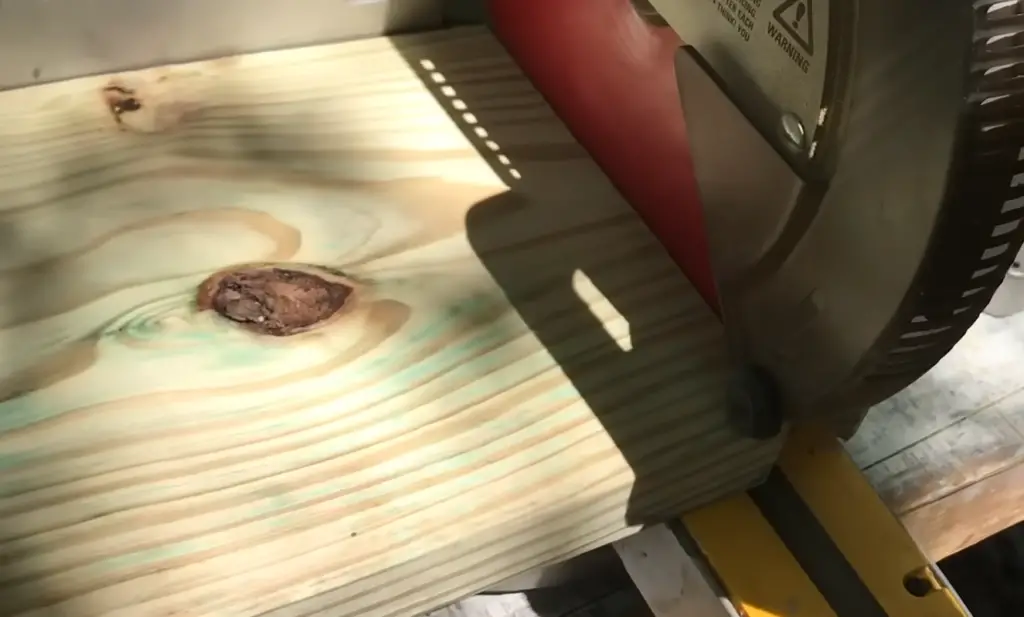
Angle Grinder
An angle grinder is a powerful tool that can be used to cut through paneling without using a saw. To use an angle grinder, you will need to put on safety goggles and hearing protection, since the noise of the machine and flying pieces of wood can be dangerous.
Start by measuring where you want to make your cuts, then position the angle grinder on the paneling. If you’re cutting a long piece, use a straight edge to make sure you’re making the cut in a straight line.
Once everything is positioned correctly, turn on the angle grinder and start cutting through the wood. It’s helpful to hold the grinder with both hands while you cut, so that you can get an even and precise cut. As you’re cutting, move the grinder slowly and adjust the angle if needed to make sure you’re making a straight line. [3]
Tin Snips
Tin snips are the easiest and least expensive tool to use when cutting paneling without a saw. Tin snips look like large scissors, with handles that can be squeezed together for quick and easy cuts. They are designed to cut through thin metals, but also work well with lighter materials such as laminated wood paneling. When using tin snips, it is important to make sure the handles are held firmly and that the cutting edge is facing in the right direction. Doing so will help ensure a clean, precise cut. To avoid jagged edges, consider using a piece of sandpaper or even steel wool to smooth out any rough patches after each cut. [3]
Cordless Drill and MAPP Gas Torch
If you’re looking for an easier way to cut paneling without a saw, a cordless drill is your next best option. This tool will allow you to make small holes in the material and use it as a guide when cutting. You’ll also need some MAPP gas torch. The combination of these two tools will provide you with enough heat to quickly melt through the paneling.
To start, place the paneling on a flat surface and make sure it’s secured down. Following that, use your cordless drill to create small holes in the material where you want the cut line to be. Once all the holes are made, attach the MAPP gas torch to the holes and heat them up until they become soft enough to cut through.
Be sure to keep the torch moving and don’t stay in one place for too long as this could cause damage to the paneling. Finally, when you have reached the desired depth, use a putty knife or scraper to separate the two pieces of material. [3]
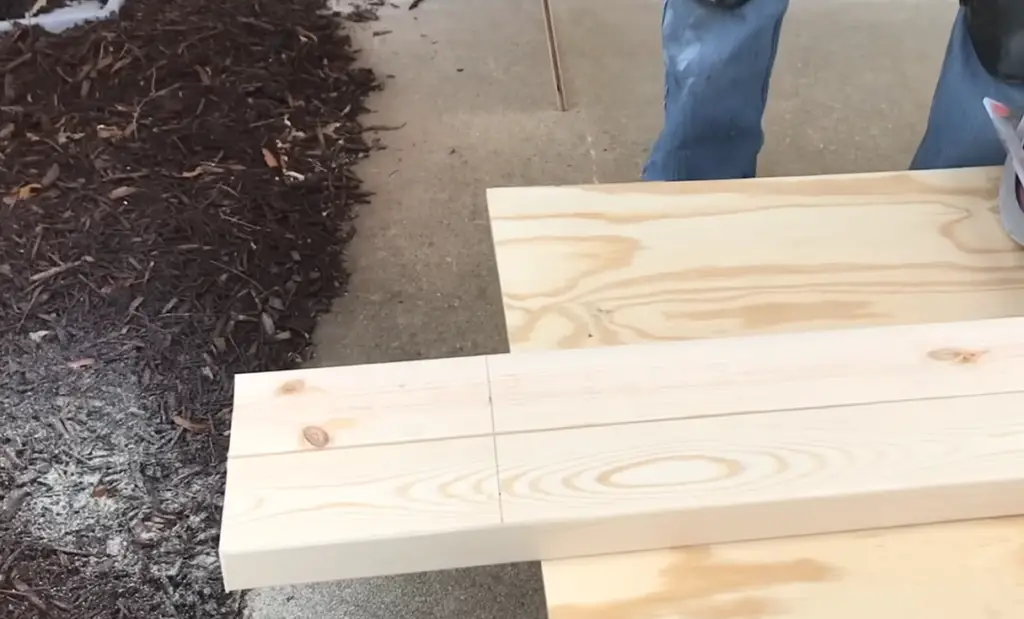
Rotary Tool
Rotary tools are a great alternative to saws, providing you with a high-precision finish. They come in both corded and cordless varieties, so you can use them almost anywhere. When cutting paneling with a rotary tool, it’s important to take your time and make sure that the cut is clean and even. It’s also important to wear safety gear, like protective goggles and a respirator mask, so that you don’t inhale any of the debris.
To get started, you’ll need to mark where you want your cut to go. Then, use the rotary tool with an appropriately sized cutting wheel to make a clean and precise cut along the line. As you’re cutting, make sure to apply even pressure so that the cut is consistent and smooth.
Be aware that this method can produce a lot of dust, so it’s important to wear your protective gear and make sure that you’re in a well-ventilated area while using the rotary tool. [3]
Reciprocating Saw
If you don’t have a saw, one of the best tools to use is a reciprocating saw. A reciprocating saw works similarly to a jigsaw but can cut thicker pieces of material. It has an adjustable blade that allows you to make straight cuts and angled cuts with precision and ease. To use a reciprocating saw, start by setting the blade depth. Measure the thickness of your paneling and adjust the depth of the blade accordingly. Install a wood-cutting blade into the saw and make sure it is securely in place. Insert an extension cord into a power source and plug in your reciprocating saw. Place your paneling onto a workbench or other flat surface for stability. Next, line up the blade against where you want to cut and switch the saw on.
There you have it! You’ve just learned how to cut paneling without a saw using a reciprocating saw. [3]
Pliers and Pincers
Pliers and pincers are great tools for cutting paneling without a saw. Pliers can be used to break or bend the paneling, while pincers can be used to cut the material into smaller pieces. To properly use pliers and pincers, make sure you have a good grip on the paneling before attempting to cut it. Take care to ensure that the pliers or pincers do not slip while cutting, as this could result in injury. Additionally, wearing protective gear such as gloves and eye protection is recommended. [3]
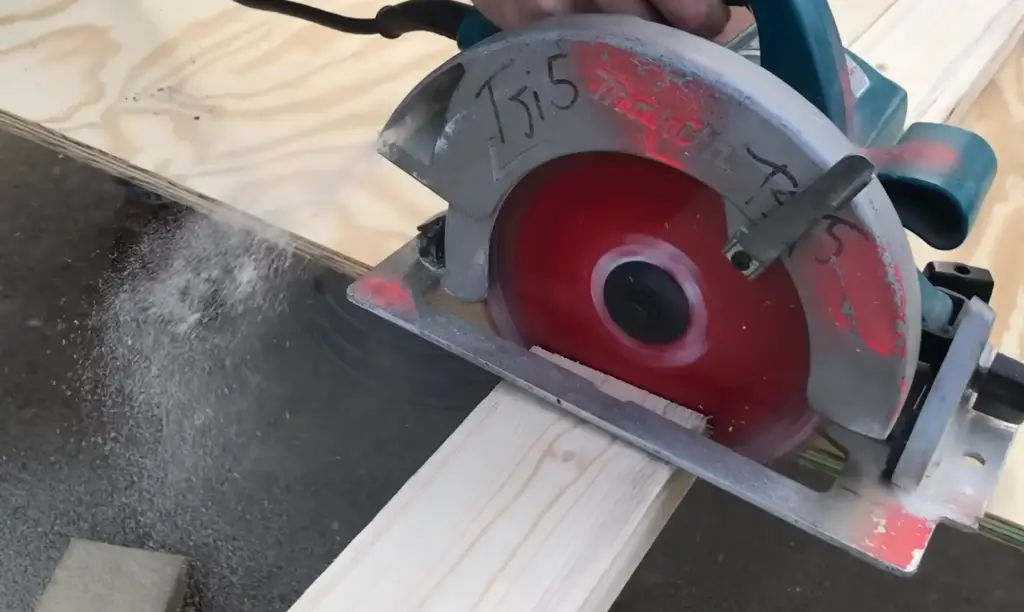
FAQ
What is the easiest way to cut wood paneling?
The easiest way to cut wood paneling is by using a saw. However, if you don’t have access to a saw or don’t know how to use one properly, there are other ways to cut the paneling. You can also use a utility knife, handsaw, chisel and mallet, jigsaw, circular saw or miter saw.
Can you cut plywood without a saw?
Yes, you can cut plywood without a saw. You can use a utility knife, handsaw, chisel and mallet, jigsaw or circular saw to make the cuts. However, these tools require more time and effort than using power tools.
What saw to cut wall panels?
If you’re looking to cut wall panels, the best saw for the job is a miter saw or circular saw. Both of these tools can make precise cuts in wall panels and are easy to use. Make sure to measure your paneling before making any cuts.
Are wall panels easy to cut?
Wall panels can be easy to cut, depending on the type of saw you use. If you have access to a miter saw or circular saw, those tools make precise cuts and are fairly simple to use. However, if you don’t have access to power tools, there are other methods that require more time and effort.
Can you cut wall paneling?
Yes, you can cut wall paneling with the right tools. The best tool to use is a miter saw or circular saw, as these tools allow for precise cuts and are easy to use. However, if you don’t have access to one of these tools, there are other methods that require more time and effort.
How do you cut MDF paneling?
MDF paneling can be cut with a variety of tools, such as a miter saw, circular saw, utility knife, handsaw, chisel and mallet or jigsaw. Before cutting the paneling, make sure to measure the area you need to cut and mark it with a pencil. This will help ensure that your cuts are accurate.
What is the best tool to cut wood paneling?
The best tool to cut wood paneling is a miter saw or circular saw. Both of these tools make precise cuts and are easy to use. However, if you don’t have access to power tools, there are other methods that require more time and effort.
Can you cut paneling with a table saw?
Yes, you can cut paneling with a table saw. However, it’s important to note that this tool requires more skill and knowledge than other methods.
Useful Video: Homemade Jigsaw Table Machine || DIY Jigsaw Table
Conclusion
Using the right tools and techniques, cutting paneling without a saw is possible. The key to success is using the right tool for the job. It’s also important to practice safety when working with any type of saw or sharp object. For example, always wear protective gear and use caution when handling blades or electric tools. If you take your time and follow these simple tips, you can easily learn how to cut paneling without a saw and create the perfect panels for your home. Good luck!
If you have any other questions about cutting paneling without a saw, don’t hesitate to reach out to an expert in the field. They will be able to provide more detailed advice on what tools and techniques are best for the job. Remember, with a bit of patience and some knowledge, you can learn how to cut paneling without a saw—no matter your skill level.
Happy cutting!
References
- https://www.sawinery.net/how-to-cut-paneling-without-splintering/#
- https://www.protoolguide.com/how-to-cut-paneling/
- https://woodiswood.com/3-tips-to-cut-wood-paneling-without-splintering/






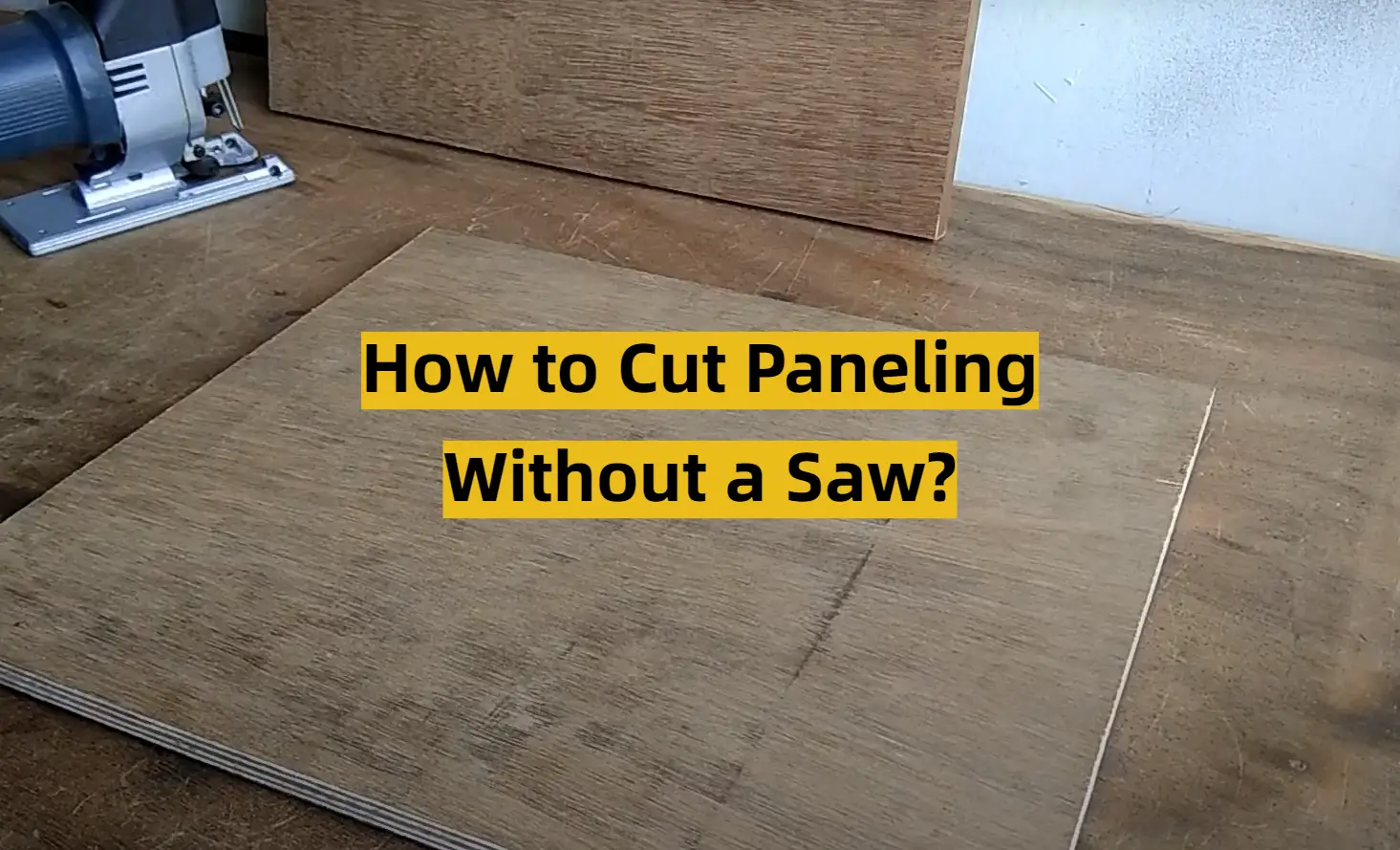






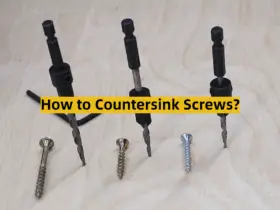

Leave a Reply